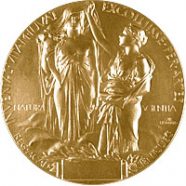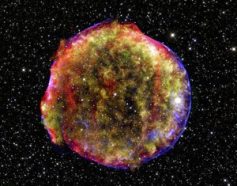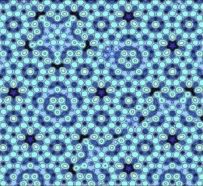Introducing the 2011 Nobel Prize winners
Scientists awarded big bucks for surprising discoveries about the universe, the human body and crystals

It’s an annual tradition: Every fall, the Nobel Foundation in Sweden announces the winners of the Nobel Prizes. It’s an exciting time, as people try to predict the winners and the winners receive phone calls that will change their lives. For a scientist, a Nobel Prize represents a supreme honor.
The scientists this year won for making unexpected discoveries about crystals, the human body and the universe. Their work has already played an important role in research, and it will shape the direction of work by others for years to come. The prize also comes with a big cash award — 10 million Swedish kronor, or about $1.5 million.
Three astrophysicists, all born in the United States, split the prize for physics this year. (Astrophysicists study how energy and matter have helped shape the universe as we know it.) Scientists know that the universe is getting bigger: Galaxies and galaxy clusters zoom away from each other at breakneck speeds, growing farther and farther apart. Most researchers assumed that this expansion had been slowing down. But in 1998, working on two separate teams, this year’s Nobel winners made a shocking discovery: The expansion of the universe is actually speeding up.
Brian Schmidt, one of the winners, works at Australian National University in Weston Creek. He told the Nobel committee his team was nervous about announcing such unexpected results.
“It was with a fair bit of [anxiety] that we ended up telling our group and eventually telling the world that we had this crazy result,” he said.
Half of the prize will go to Saul Permutter of the Lawrence Berkeley National Laboratory in California, who made the discovery while conducting the Supernova Cosmology Project. The other half will be split by Schmidt and Adam Reiss, from Johns Hopkins University and the Space Telescope Science Institute in Baltimore. Schmidt and Reiss made the same discovery at the same time as Perlmutter. Their project was called the High-z Supernova Search Team.
“This is tremendous news, in recognition of a fundamental discovery that has changed our picture of the universe,” physicist Robert Caldwell told Science News. Caldwell, who works at Dartmouth College, studies the origins of the universe.

The Nobel Prize for chemistry also went to a scientist who surprised the world with his findings. On an April morning in 1982, Israeli chemist Daniel Shechtman mixed together two minerals and created something that he’d thought was impossible. Before Shechtman’s discovery, scientists thought that atoms and molecules inside crystals were packed together in a repeating, symmetrical pattern. Without repetition, there couldn’t be a crystal.
But on that April morning, Shechtman didn’t see repetition. Instead, in his mineral mixture he saw patterns that never repeated.
That morning, he said to himself, “Eyn chaya kazo.” That’s Hebrew for “There can be no such creature.”
At first, other scientists didn’t believe him. Shechtman said his work was ridiculed by other researchers. His boss even told him to read up on the basics about crystals. Still, Shechtman knew what he’d seen. His work wasn’t published until 1984. Since then, chemists have changed the definition of crystals to include solid materials like Shechtman’s quasi-crystals. Other kinds of quasi-crystals have been created, and naturally occurring quasi-crystals have been found in Russia.

Shechtman made his discovery while he worked at what used to be called the U.S. National Bureau of Standards. (It’s now known as the National Institute of Standards and Technology). This award-winning chemist now works at the Technion–Israel Institute of Technology in Haifa.
“He discovered something nobody thought possible,” chemical engineer Nancy Jackson told Science News. She is president of the American Chemical Society. “But he stuck to his guns, and with time researchers found that this unique crystal structure was actually right.”
The Nobel Prize in Physiology or Medicine went to three researchers who uncovered ways that the human body’s immune system fights infections. The immune system uses different kinds of cells and proteins to keep disease-causing microbes from causing problems. Scientists study the immune system to learn how to keep people healthy.
Two scientists were recognized for discovering how certain proteins identify invading germs. Bruce Beutler of the University of Texas Southwestern Medical Center in Dallas and Jules Hoffmann of the Molecular and Cellular Biology Institute in Strasbourg, France, will share half of the prize money. The men discovered that proteins known as toll-like receptors play crucial roles in fighting infections.
“They deliver the first foot in the battle,” Anthony Fauci told Science News. Fauci is the director of the National Institute of Allergy and Infectious Diseases in Bethesda, Md. He said these special proteins “recognize different components shared by many microbes or viruses.”
Beutler and Hoffmann share the honor with Ralph Steinman of Rockefeller University in New York City, who died September 30, just 3 days before the awards were announced. Steinman discovered dendritic cells, which help T-cells — the body’s infection-fighting force — recognize disease-causing germs. Dendritic cells relay messages between different parts of the body’s immune system.
This year’s Nobel Prize winners will be the center of attention at a ceremony in Stockholm on December 10. There, the awardees will receive medals and certificates, as well as a letter from the King of Sweden, Carl XVI Gustaf.
POWER WORDS (Adapted from the New Oxford American Dictionary)
cell The smallest structural and functional unit of an organism.
protein Compounds that are an essential part of all living organisms. Proteins do the work inside a cell. They may be parts of body tissues such as muscle, hair and collagen. Proteins may also be enzymes and antibodies.
physics The scientific study of energy and matter. Physics includes the areas of mechanics, heat, light and other radiation, sound, electricity, magnetism and the structure of atoms.
chemistry The scientific study of the substances of which matter is composed, including the investigation of the ways these substances combine and change.
astrophysics The branch of astronomy concerned with the physics of stars and other celestial bodies, and using physics to understand astronomical observations.
microbe A microorganism — such as bacteria, viruses and some fungi — too small to see with the naked eye.







